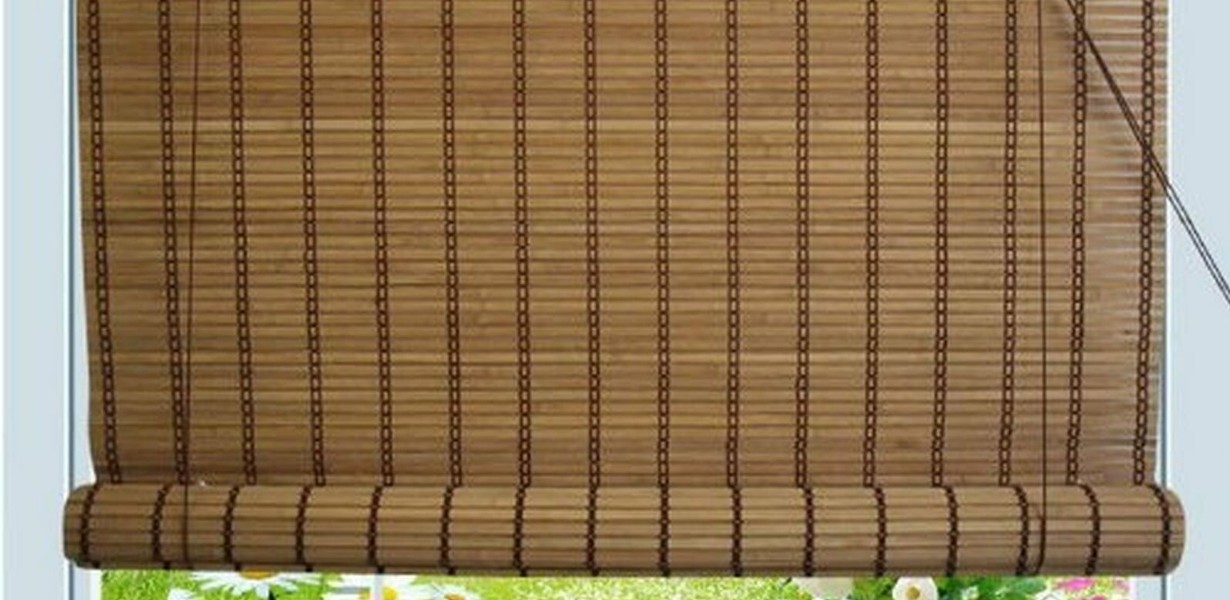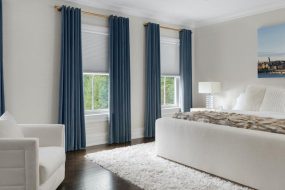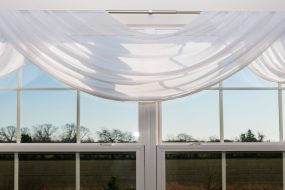
Welcome to our comprehensive guide on blinds and shades. In this article, we will explore the world of window coverings, focusing on the benefits and options available for blinds and shades. Transforming your windows with the perfect blinds or shades not only adds a touch of elegance to your home but also provides privacy, light control, and energy efficiency. Let’s delve into the intricacies of blinds and shades and discover how these essential elements can enhance your living spaces.
Understanding Blinds and Shades
Blinds and shades are versatile window treatments that offer both functional and aesthetic advantages. Let’s delve into their unique characteristics and benefits.
Blinds: Blinds are window coverings made of slats or vanes that can be adjusted to control the amount of light and privacy in a room. They are typically made of materials such as wood, faux wood, aluminum, or vinyl. Blinds come in various styles, including horizontal blinds (such as Venetian blinds) and vertical blinds. They offer precise light control and can be tilted or raised to let in natural light or provide privacy.
Shades: Shades are window coverings made of a single piece of fabric or material that can be raised or lowered to cover the window. They come in different styles, such as roller shades, cellular shades, Roman shades, and pleated shades. Shades offer a clean and streamlined look to your windows while providing insulation, light filtering, and privacy. They are available in a wide range of colors, patterns, and opacities to suit your preferences.
Benefits of Blinds and Shades
Investing in high-quality blinds and shades can bring several advantages to your home. Here are three actionable tips to consider when selecting blinds and shades:
- Light Control: Blinds and shades offer exceptional control over natural light. With blinds, you can adjust the slats to create the desired lighting ambiance in your room. Shades, on the other hand, provide varying degrees of light filtering or blocking options, allowing you to customize the amount of light entering your space. Consider the orientation of your windows and the specific lighting needs of each room to choose the perfect window treatment.
- Privacy and Security: Blinds and shades provide an additional layer of privacy, ensuring that your home remains a sanctuary away from prying eyes. Whether you live in a bustling neighborhood or simply desire a sense of seclusion, the ability to control the visibility into your home is essential. Blinds and shades offer peace of mind, allowing you to relax and enjoy your living spaces without compromising privacy.
- Energy Efficiency: Both blinds and shades contribute to energy efficiency in your home. They act as insulators, reducing heat gain during hot summer months and minimizing heat loss during the winter. By properly controlling sunlight and heat, blinds and shades can help regulate the temperature in your rooms and reduce the strain on your HVAC system. This not only saves energy but also lowers your utility bills.
Frequently Asked Questions (FAQs)
Q1: How do I clean and maintain blinds or shades?
A1: Cleaning and maintaining blinds and shades is relatively simple. For blinds, you can use a damp cloth or a vacuum with a brush attachment to remove dust and dirt from the slats. Shades can be cleaned with a soft brush or a gentle vacuuming using a brush attachment. For deeper cleaning, some blinds and shades can be gently wiped with mild detergent and water. Always refer to the manufacturer’s instructions for specific cleaning guidelines.
Q2: Can I install blinds or shades myself?
A2: Installing blinds or shades can be a DIY project, especially with the availability of user-friendly installation kits. However, it’s important to follow the manufacturer’s instructions carefully to ensure proper installation. Some window treatments may require precise measurements and specialized tools. If you’re unsure or prefer professional assistance, it’s advisable to consult a local window treatment specialist who can ensure a flawless installation.
Q3: How do I choose the right blinds or shades for my windows?
A3: Selecting the perfect blinds or shades for your windows involves considering several factors. Start by determining the purpose of the window treatment—whether you prioritize privacy, light control, or aesthetics. Measure your windows accurately to ensure a proper fit. Consider the style and color that complements your existing décor. Additionally, take into account the type of material, as it can influence the overall look and performance of the blinds or shades.
Q4: Can blinds or shades help with sound insulation?
A4: While blinds and shades can provide some level of sound insulation, their effectiveness varies depending on the materials and designs. Certain types of shades, such as cellular or honeycomb shades, have inherent sound-absorbing properties due to their construction. However, for significant sound reduction, additional measures such as window insulation films or double-glazed windows might be more effective.
Q5: What is the difference between blinds and shades?
A5: Blinds are made up of individual slats or vanes that can be adjusted to control light and privacy, while shades consist of a single piece of fabric that can be raised or lowered. Blinds offer precise light control and a wider range of visibility options, while shades provide a clean, streamlined look with varying degrees of light filtration and insulation.
Conclusion
Blinds and shades are essential elements in home decor, offering a combination of functionality and style. By understanding the benefits and options available, you can choose the perfect blinds or shades to elevate the ambiance of your living spaces. Consider factors such as light control, privacy, and energy efficiency when making your selection. With their versatility and timeless appeal, blinds and shades can transform your windows into captivating focal points while enhancing your overall comfort and well-being.
Advertisement







